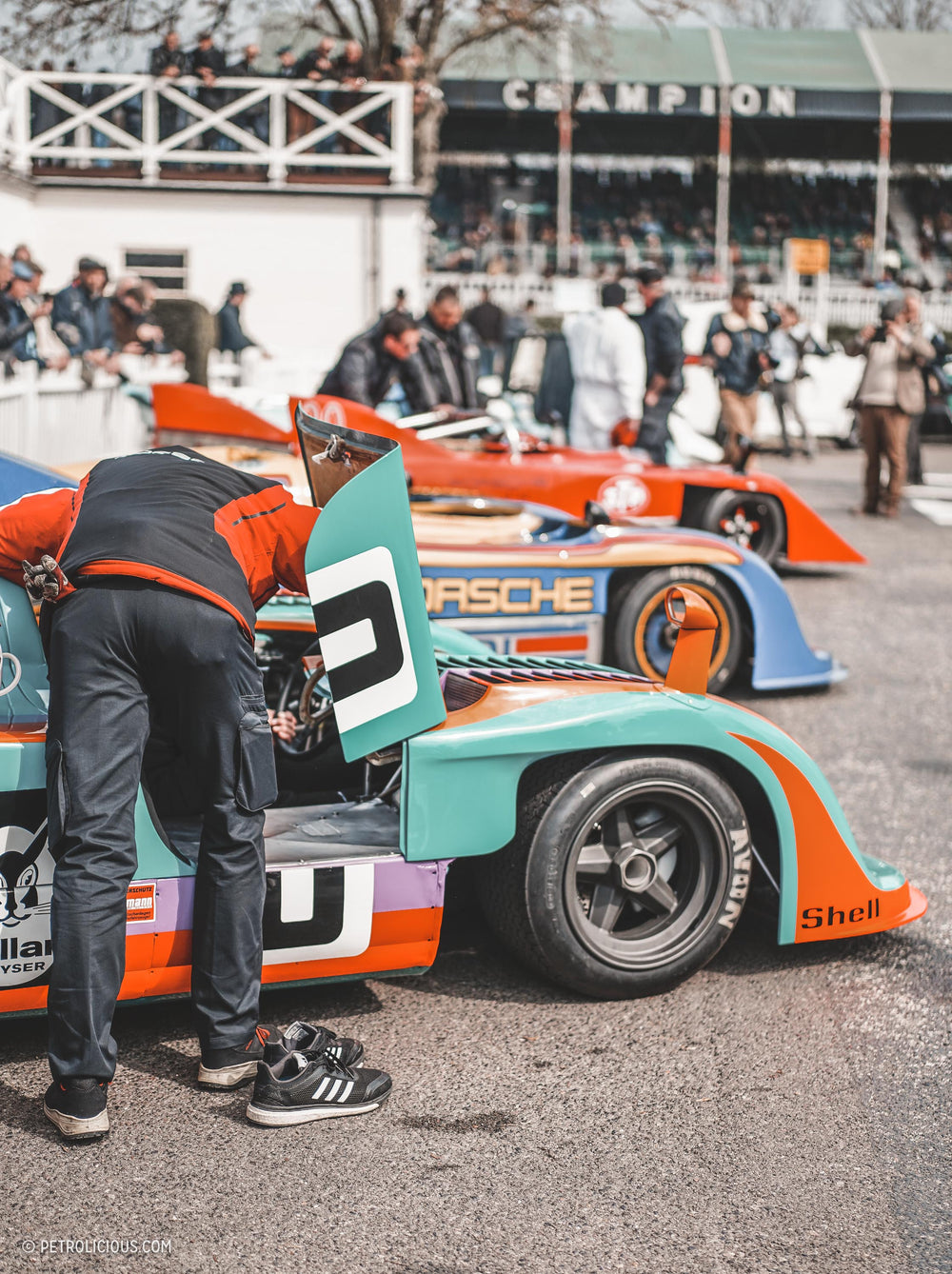In 1969, 50 years ago, one of the most influential race cars ever made was presented to the public for the first time at the Geneva Motor Show. It was also the year in which the Concorde made its maiden flight out of England’s Filton Airfield. The Concorde achieved new records in terms of passenger aircraft speeds, and could reach ground speeds of 2,179 km/h. As the Concorde was being buttoned up, so too was the first Porsche 917. Chassis 001 was being developed by a small team of talented and ambitious Porsche engineers like Hans Mezger and Helmuth Bott, and though it had its share of teething issues in 1969, the 917 and its iterations would go on to cement those three numbers as the most famous in all of endurance racing.
Up until very recently, chassis 001 was in the midst of a multi-year-long restoration at the Porsche Museum workshop to bring it back to its original condition as displayed at the Motor Show back in 1969. Today the 580hp, 4.5L flat-12 race car looks just as it did on the 12th of March, 1969, explains Alexander Klein, head of vehicle management for the Porsche Museum.





Seeing just one example of a 917 in person is a rare treat, but last weekend at the 77th Goodwood Members’ Meeting attendees had the distinct pleasure of experiencing five unique Porsche 917s—and they all went out on track too.
In addition to the “Motor Show 917” (the white and green example that’s appropriately wearing “917”, the first of the batch of 25 homologation cars), the first 917/30 was also part of the group. Chassis number 917/30-001 was the first turbo spider version of Porsche 917, and was an evolution of the already-nutty twin-turbocharged 917/10 Can-Am car. During the weekend, 917/30-001 was wearing the distinctive livery of its 1975 sponsor, the central heating unit manufacturer Vaillant. Take a closer look at the wheelbase too—you might be able to notice the extra 184mm versus a “conventional” 917 chassis.






Additionally, a freshly-restored short tail car in the blue and orange Gulf Oil colors (a 917KH, chassis 15), joined the group to bring in some Le Mans and McQueen elements. The short tail version of the 917 won the 24 Hours of Le Mans two times in a row (‘70 and ’71), and also sett a track record of an average speed of 222 km/h (just under 138mph) which stood for 39 years.




A regular at Goodwood events, the Sunoco-liveried 917/30 is a crowd favorite wherever it shows up. Developing in the region of 1,200hp from its 5.3L twin-turbo flat-12, the 917/30 weighs just 850kg, which helped it to become one of the fastest accelerating cars of its era (and of many others’). With the engine arguably reaching its peak development in this guise, Mark Donohue set a closed-course speed record at Talladega Speedway in the sister car to this, at an average speed of 355.848km/h (over 221mph).








Finally, the privately-owned 917/10-002 ex-Jo Siffert STP Can-Am car (pictured below) rounded out the group (and is looking for a new owner at this weekend’s Techno Classica event in Germany). Behind the wheel were of course some of the best in the business: Le Mans winners Richard Attwood, Neel Jani, and Derek Bell, along with former F1 and LMP1 racer Mark Webber, just to give you a sense.


The performance on track of these five legends was clearly one of the highlights of this year’s Members’ Meeting, and although it would be even better to see them thrashed with abandon in period, the demo runs were still exhilarating (just watching one of them idle is enough to increase the heart rate of any genuine car enthusiast).




After the Saturday performances on track, ex-Porsche factory drivers Vic Elford and Richard Attwood walked to the paddock area, barely containing their admiration and enthusiasm for the line-up the four works cars. “Yes, 917 was a real beast, but this caliber of racer’s never scared me, not one moment of uncomfortable feelings, back in the day,” Elford reminisces.
Together with Richard Attwood, he nearly earned an outright victory with the 917 back in 1969 during the car’s first attempt at the race it was designed to win. “One year later, we finally managed to win Le Mans with this beast, although this time around my co-pilot was Hans Herrmann,” Attwood recalls. Though it had some issues with aerodynamics early in its career, the 917 managed to secure an overall victory in its very first year of competing in the 1,000-kilometre race at Zeltweg, Austria in 1969. Then, in 1970, Hans Herrmann and Richard Attwood achieved the coveted overall victory at Le Mans, the greatest motorsport success Porsche had ever achieved until that point, and one that would be repeated the following year by Dr. Helmut Marko and Gijs van Lennep. The 917 is inextricably linked to the French endurance challenge, and to see the early versions and the later turbo monsters assembled in one place was a reminder of just how much presence they possess half a century later.


























































